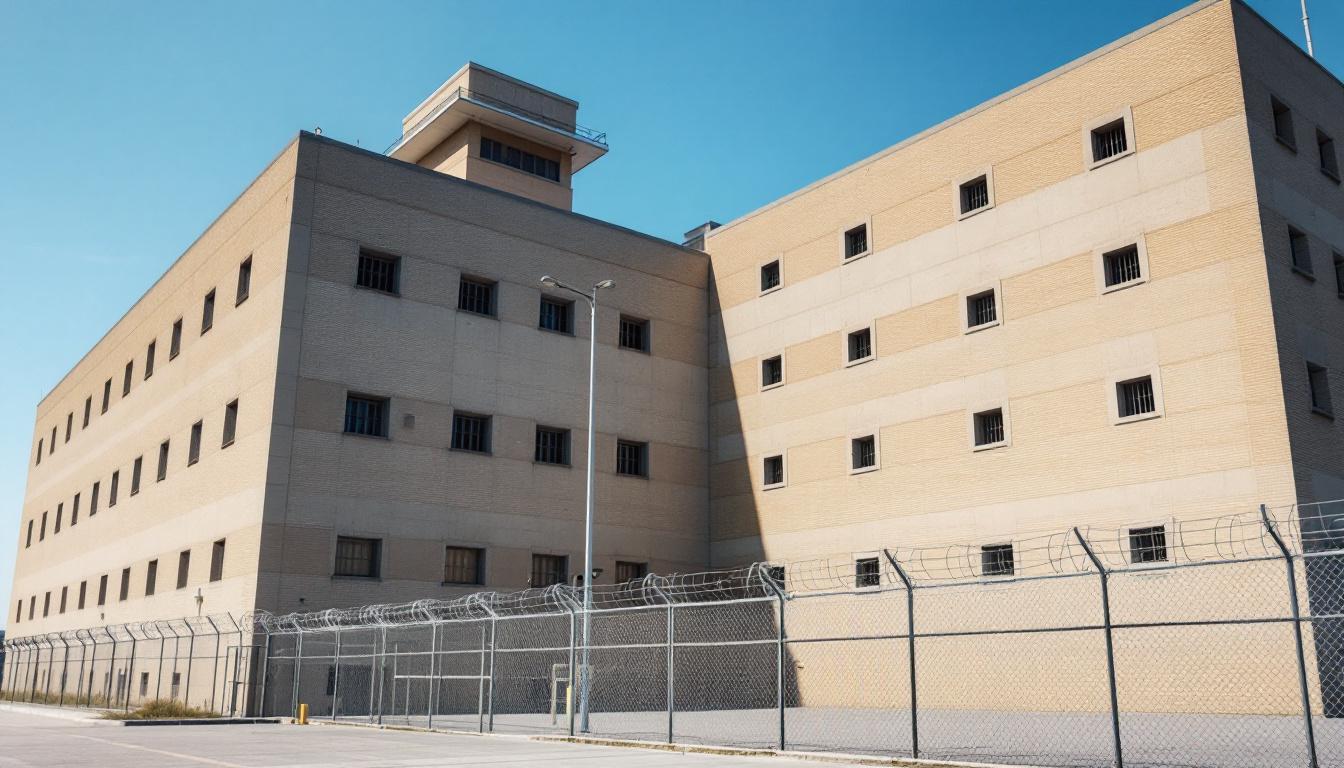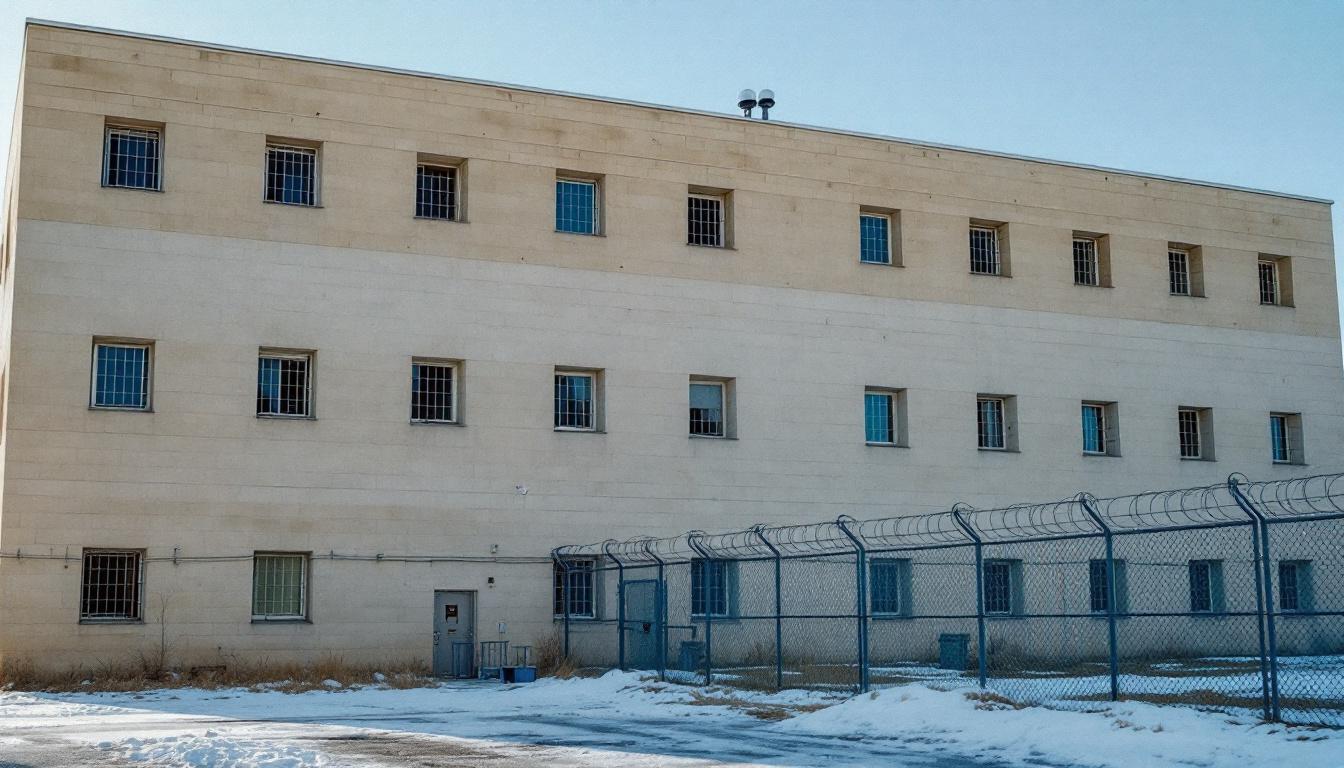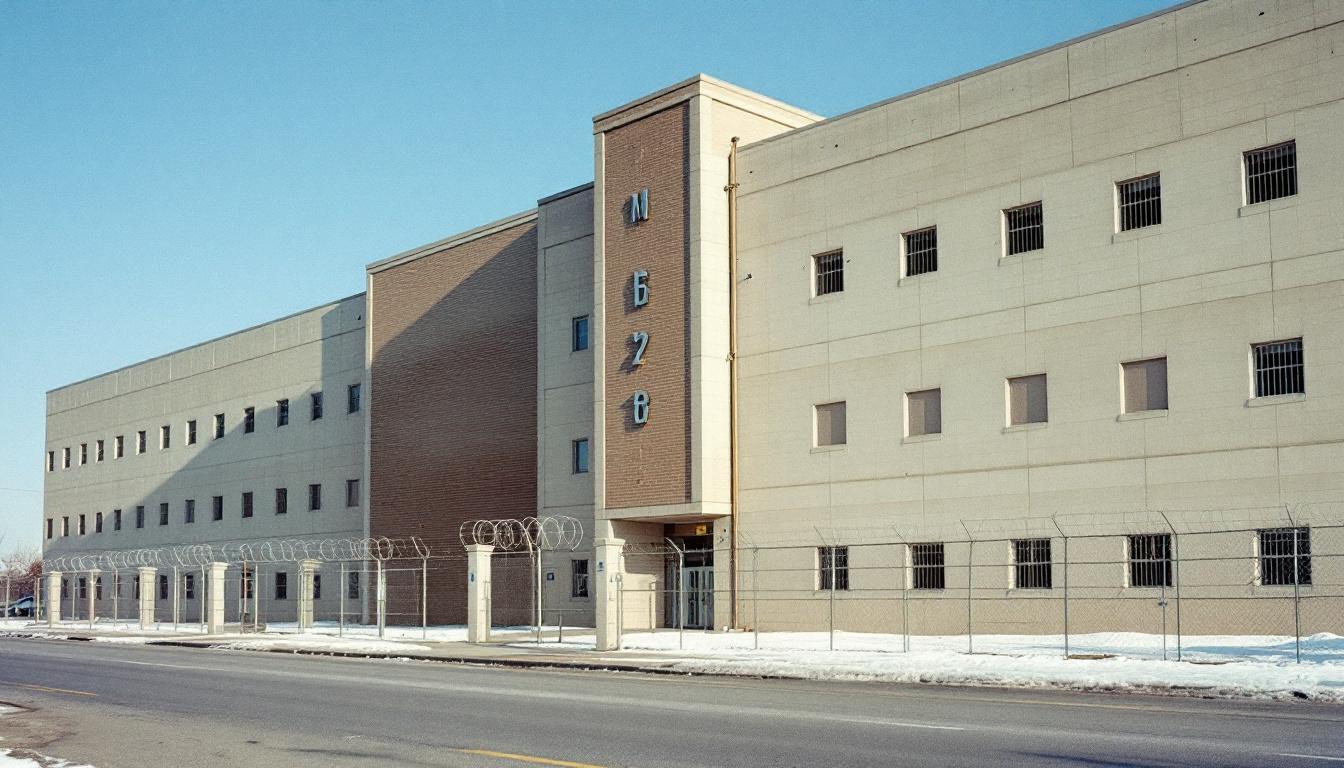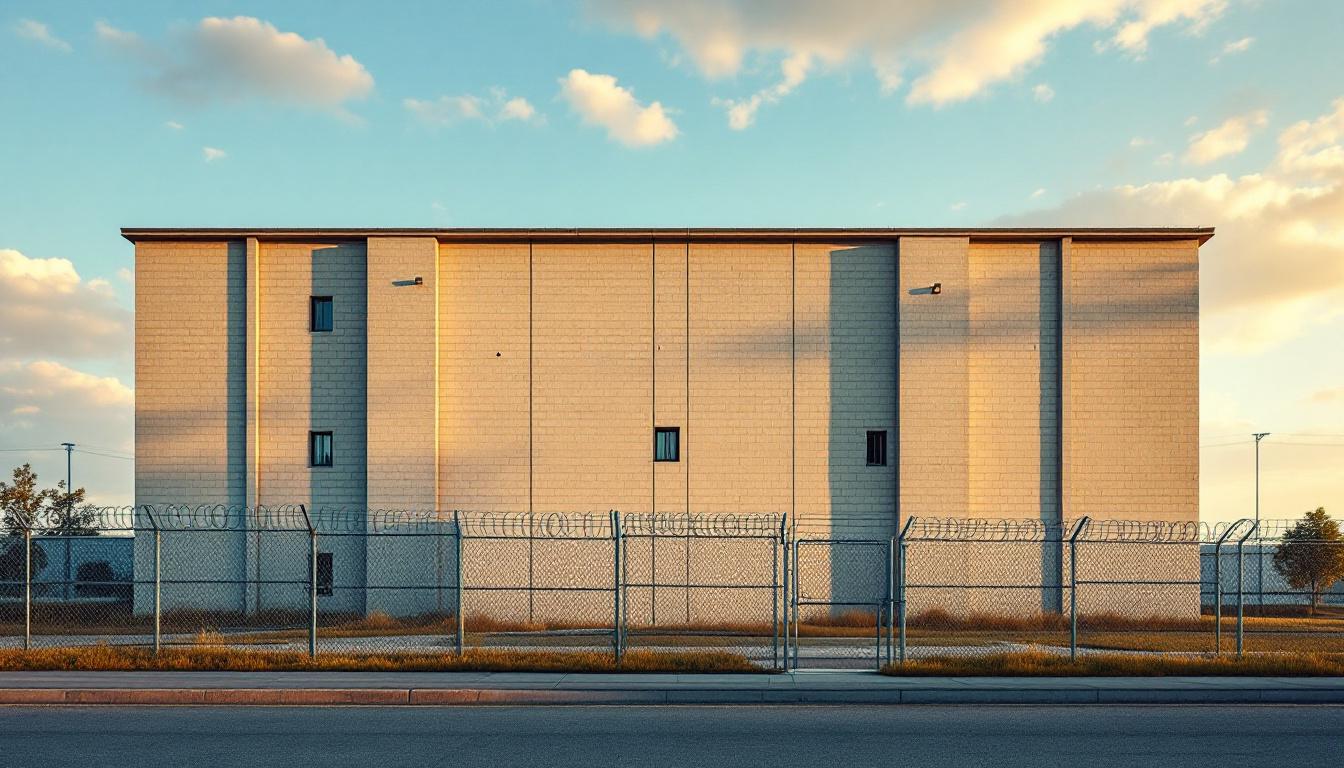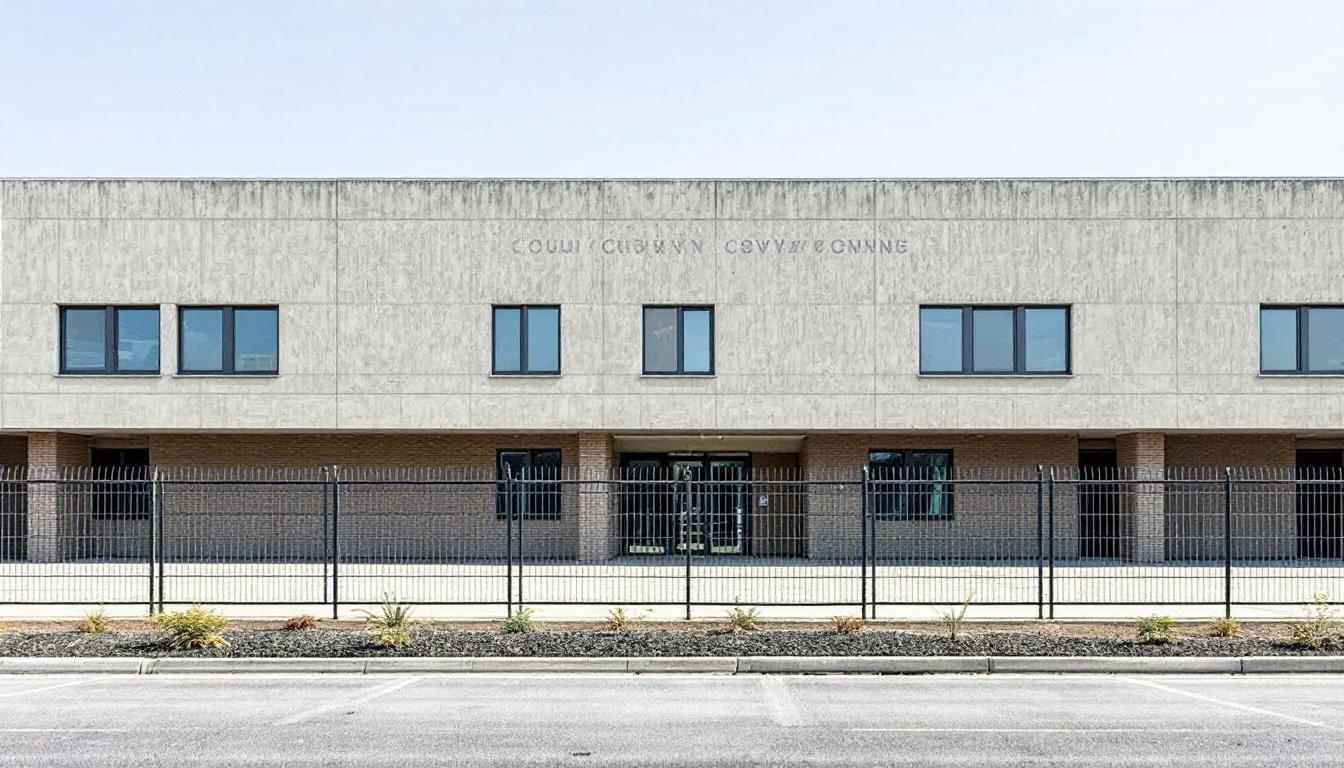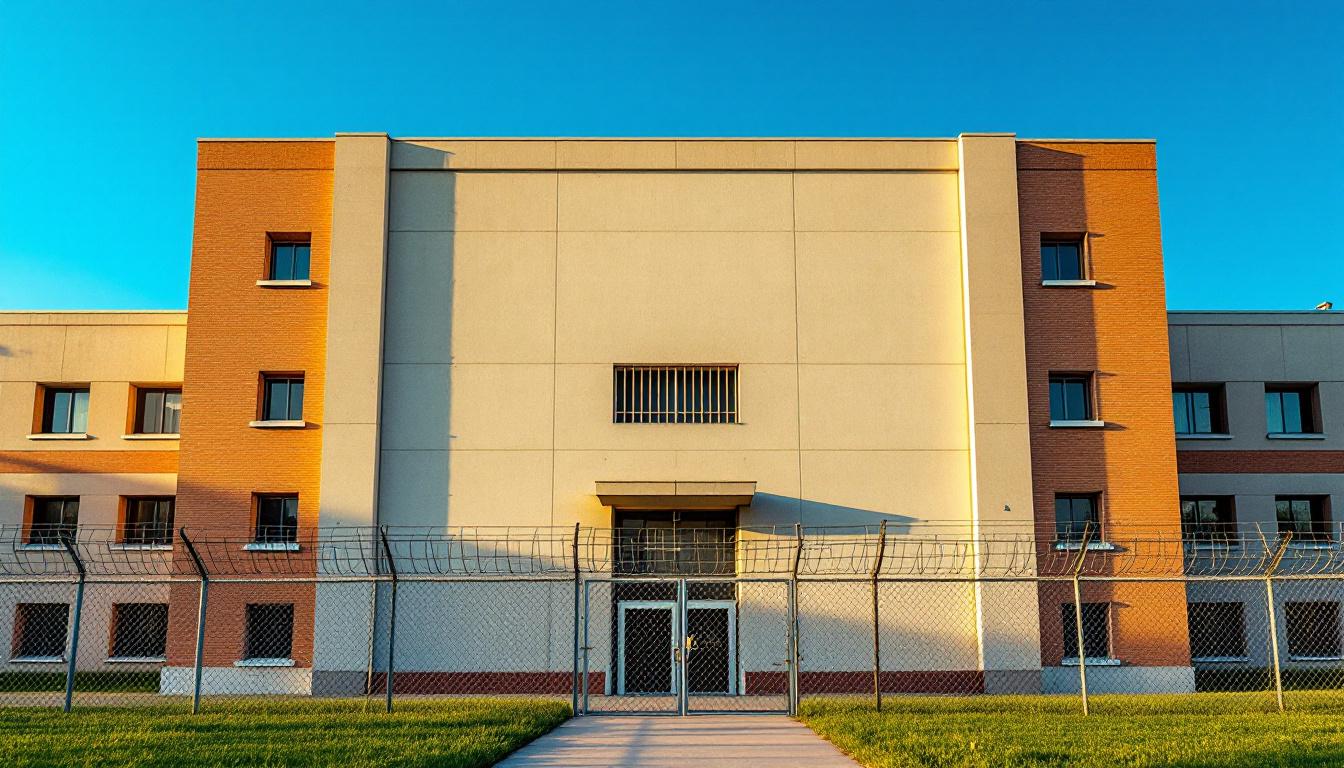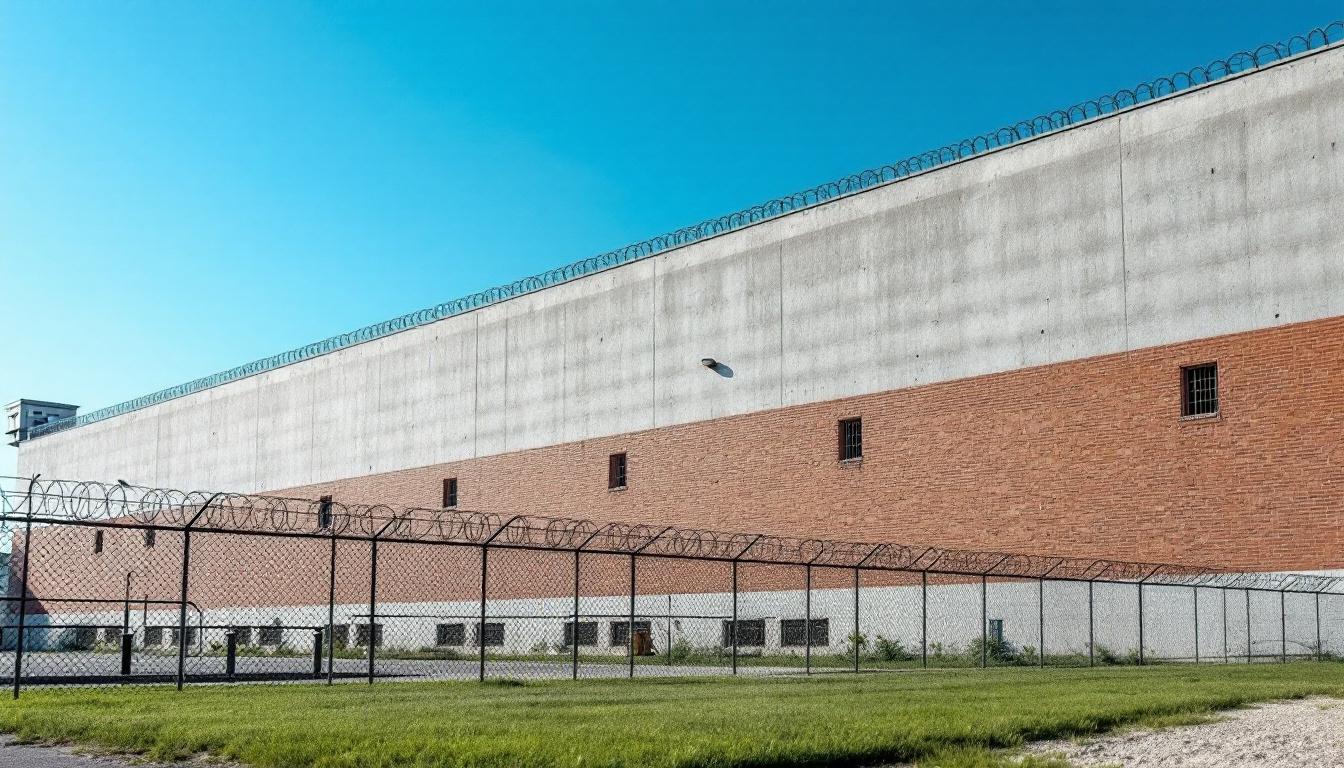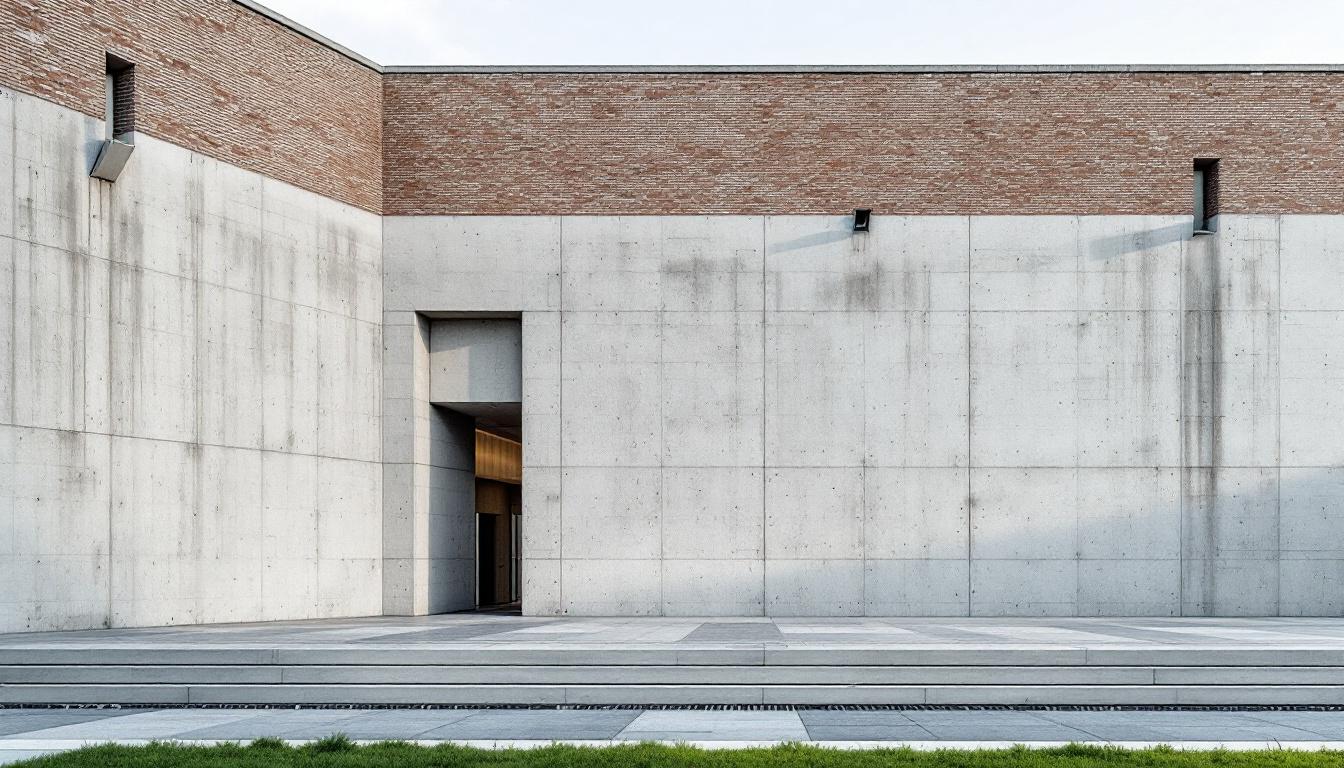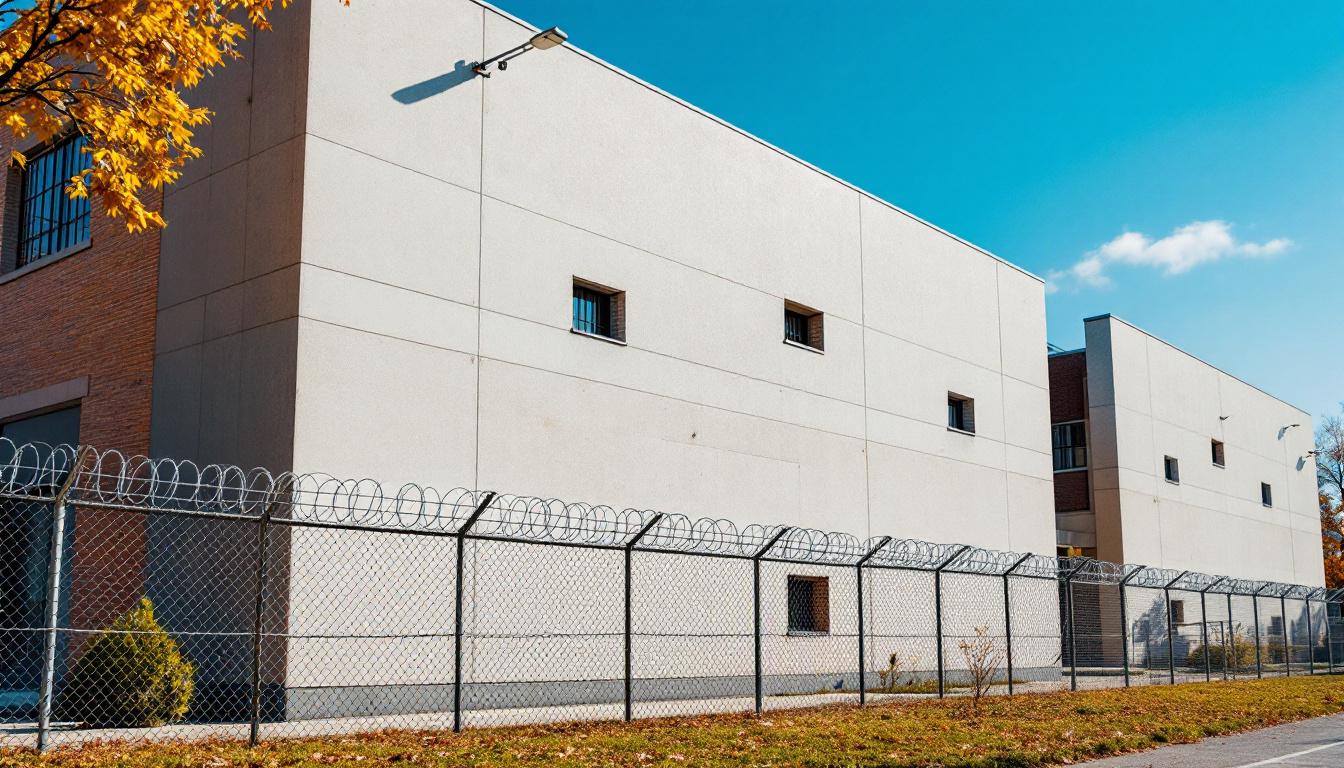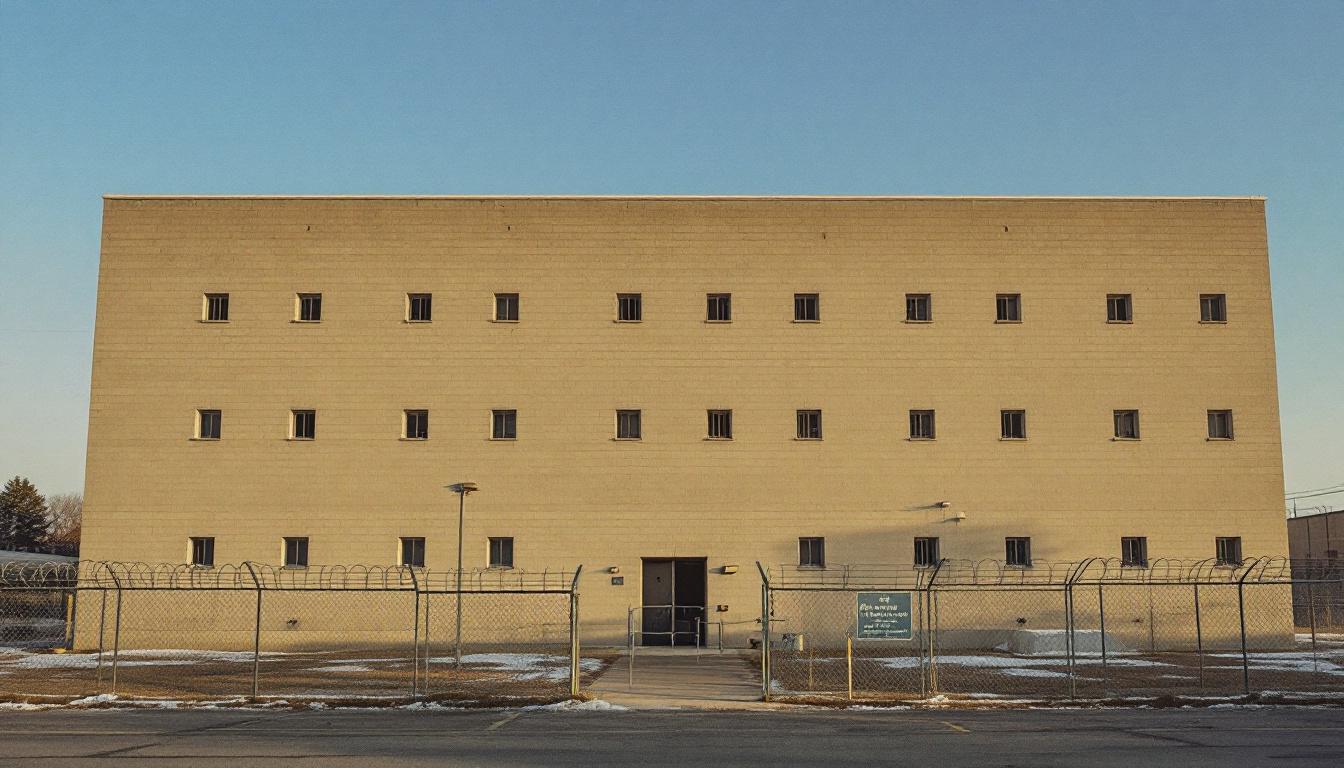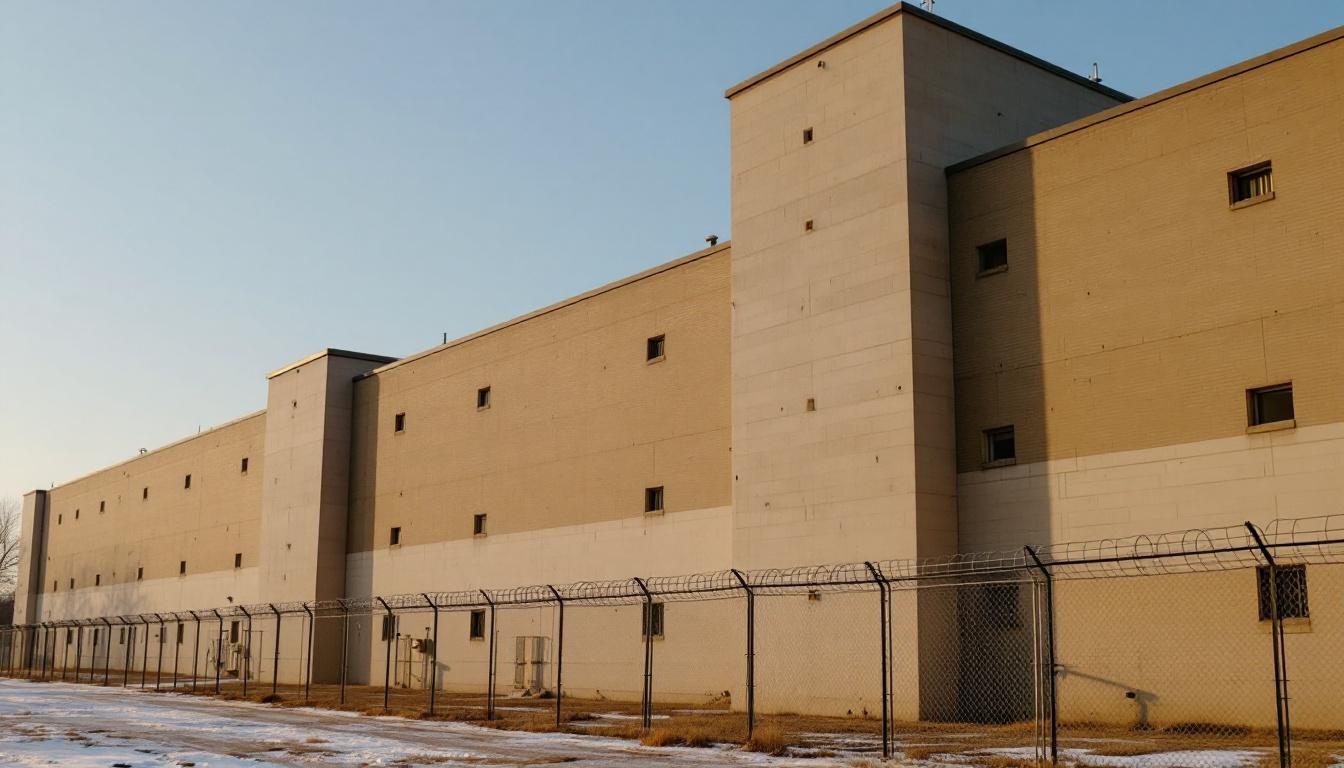
Quick Navigation
How to contact an inmate at Medina County Jail
This comprehensive guide will walk you through how to connect with an inmate at Medina County Jail. Follow the steps below to find an inmate and send letters and photos:
- Search for the inmate using our search tool below
- Create your account or log in to Penmate
- Write your message (up to 6,000 characters)
- Send instantly - inmates receive printed copies daily
Find an Inmate
Search for an inmate to start communicating today
Tip: You can search by first name, last name, or inmate ID number
To contact a person at Medina County Jail start by searching for the person on the official facility website. Perform a search by following these steps:
- Step 1: Enter their first name and last name into the search form and click "Search"
- Step 2: Locate their inmate record
- Step 3: Write down their Inmate ID and any housing information provided
Important! Be sure to enter the person's full name. Nicknames should not be used.
How to Send Messages to Inmates

You can use your phone or computer to send emails, letters, and photos to an inmate. Messages are sent electronically to inmate tablets or kiosks at the facility. If you would like to send a message, start by searching for an inmate at Medina County Jail.
Sending Photos and Postcards

A great way to send love and support to a loved one at Medina County Jail is to send photos and postcards. It only takes a few minutes to send photos from your phone and it makes a huge difference. You can also mail postcards with words of support and inspiration, or design your own postcard for special moments like birthdays and holidays.
Important! Be sure not to send any explicit photos or they may not be approved by the facility. You can also use a photo printing app like Penmate to make sure your photos are printed at the correct size (4x6 or 3x5) and are mailed according to the rules and regulations of Medina County Jail.
Frequently asked questions about Medina County Jail
-
How long does it take to deliver a message?
If you're sending an email message your letter is usually delivered within 24-48 hours. For messages sent via mail you should expect delivery within 3-7 days. All messages will need be approved by Medina County Jail.
-
How much does it cost to send a message to Medina County Jail?
You can send a message free using your phone or mail a message via USPS for the price of a $0.60 stamp and envelope. You can also purchase credits or e-stamps from services starting at $1.99.
-
What services can I use to contact an inmate at Medina County Jail?
Penmate
You can use Penmate to send letters and photos to an inmate from your phone. It's an easy way to stay in touch during your loved one's incarceration. Use the inmate locator to find an inmate's location and contact information, then you can send messages within a few minutes.
Securus messaging
Securus may be another option for communicating with an inmate at Medina County Jail. You can create a friends and family account and purchase credits to send messages. All messages will be reviewed and must be approved by the facility.
JPay
Some county jails and state prisons may support sending messages with JPay. You must register an account with the system, find your loved one, and purchase stamps to send messages. For some locations you can also attach photos.
Smart Jail Mail
You may also check if Smart Jail Mail is available at Medina County Jail. Smart Jail Mail is operated by Smart Communications and has contracted with some state and county jails. After purchasing credits, your messages and photos are sent to the facility, printed out, and then handed out to your loved one.
-
What is the mailing address of Medina County Jail?
Mailing address:
Medina County Jail
801 Ave Y
Hondo, TX 78861
Phone: (830) 741-6159Business hours:
- Monday: Open 24 hours
- Tuesday: Open 24 hours
- Wednesday: Open 24 hours
- Thursday: Open 24 hours
- Friday: Open 24 hours
- Saturday: Open 24 hours
- Sunday: Open 24 hours
-
What are the visiting hours at Medina County Jail?
Visiting hours at Medina County Jail vary by housing unit and security level. Generally, visits are scheduled on weekends and holidays, with some facilities offering weekday visits. Contact the facility directly at (830) 741-6159 or check their website for the current visiting schedule. Visits typically last 30-60 minutes and must be scheduled in advance.
-
What items are prohibited when sending mail to Medina County Jail?
Prohibited items typically include: cash, personal checks, stamps, stickers, glitter, glue, tape, staples, paperclips, polaroid photos, musical or blank greeting cards, hardcover books, magazines with staples, and any items containing metal or electronics. Only send letters on plain white paper with blue or black ink. Photos must be printed on regular photo paper (no Polaroids). Always check with Medina County Jail for their specific mail policies.
-
How do I send money to an inmate at Medina County Jail?
You can send money to an inmate at Medina County Jail through several methods: 1) Online using JPay, Access Corrections, or the facility's approved vendor, 2) Money orders mailed directly to the facility with the inmate's name and ID number, 3) Kiosks located in the facility lobby, or 4) Over the phone using a credit or debit card. Fees vary by method, typically ranging from $2.95 to $11.95 per transaction.
-
Can I schedule a video visit with an inmate at Medina County Jail?
Many facilities now offer video visitation as an alternative to in-person visits. At Medina County Jail, video visits may be available through services like Penmate, Securus Video Connect, GTL, or ICSolutions. Video visits typically cost $10-20 for 20-30 minutes and must be scheduled in advance. You'll need a computer or smartphone with a camera and reliable internet connection. Contact the facility for their specific video visitation policies and approved vendors.
-
What identification do I need to visit an inmate at Medina County Jail?
All visitors must present valid government-issued photo identification such as a driver's license, state ID, passport, or military ID. Minors must be accompanied by a parent or legal guardian who can provide the minor's birth certificate. Some facilities require visitors to be on the inmate's approved visitation list, which may require a background check. Contact Medina County Jail for specific ID requirements and visitor approval procedures.
-
How can I find out an inmate's release date?
To find an inmate's release date at Medina County Jail, you can: 1) Use the online inmate search tool if available, 2) Call the facility's records department, 3) Contact the inmate's case manager or counselor, or 4) Have the inmate provide this information during a call or visit. For privacy reasons, some facilities only release this information to immediate family members.
Facility Overview
Official Website

About Medina County Jail
Community safety and rehabilitation converge at the heart of Tampa, where local residents and their families navigate the challenges of the justice system with support from Medina County Jail, OH. This OH correctional facility serves as a vital link between law enforcement, judicial proceedings, and community reintegration efforts throughout the region. Designed to house individuals awaiting trial and those serving shorter sentences, the facility typically maintains connections with local organizations that may provide educational resources, substance abuse counseling, and job readiness programs to help prepare inmates for their eventual return to the community.
The county jail operates within Ohio’s broader correctional framework, often collaborating with regional service providers to address the diverse needs of its population. Inmates services may include access to legal resources, medical care, and communication opportunities with family members, recognizing that maintaining these connections can be crucial for successful reintegration. The facility generally works to balance security requirements with rehabilitation-focused programming, understanding that many individuals who pass through its doors will return to Tampa and surrounding Medina County communities.
Located in this Midwest region setting, the jail typically serves not dedicated as a detention center but as a potential gateway to resources that address underlying issues contributing to criminal behavior. Mental health services, educational opportunities, and vocational training programs may be available through partnerships with community organizations, though specific offerings can vary based on funding and available resources. These collaborative efforts reflect a broader understanding that effective corrections involves not just secure housing, but comprehensive support systems that benefit both individuals in custody and the wider community they will rejoin.
Programs & Services
Personal growth and rehabilitation form the cornerstone of the comprehensive services typically available at Medina County Jail in Ohio. The facility’s approach to inmate development emphasizes building essential life skills and addressing underlying issues that may have contributed to incarceration. Through a structured framework of educational, vocational, and therapeutic offerings, inmates often have opportunities to work toward meaningful change during their time in custody.
Educational initiatives may provide inmates with pathways to academic advancement and intellectual growth. Tutoring programs typically support those working to complete their high school education or improve basic literacy and numeracy skills. Additionally, job training services often focus on developing practical workplace competencies that can translate into employment opportunities upon release. These vocational programs may include instruction in various trades and skills that are in demand within the local job market.
Recovery services frequently address substance abuse issues through counseling and support group participation. The facility may also offer arts and crafts activities that serve both therapeutic and recreational purposes, allowing inmates to explore creative expression while developing patience and focus. These support services often work in conjunction with other rehabilitative efforts to provide a well-rounded approach to personal development and preparation for successful community reintegration.
Daily Life & Visitation

The housing units at Medina County Jail feature a structured environment where inmates navigate their daily routines within secure living quarters. Inmates currently follow established schedules that provide predictability to their days, with activities that continue to offer opportunities for personal development and maintaining connections with the outside world. The facility typically operates on a regimented timeline that includes designated periods for meals, recreation, and various programming activities.
Living accommodations generally consist of shared cells or dormitory-style housing units, where inmates adapt to close quarters with limited personal space. Each housing area usually provides basic amenities including sleeping areas, restroom facilities, and common spaces for activities. Additionally, inmates may access commissary services to purchase approved personal items and snacks, which helps them maintain some level of personal choice within the controlled environment. While the physical space is restrictive, inmates often develop routines and relationships that help them cope with the confined living conditions.
The facility typically provides structured programming schedules that may include educational opportunities, work assignments within the jail, and recreational activities. Inmates can usually participate in exercise periods and may have access to television viewing areas during designated times. Additionally, visitation policies generally allow for regular contact with family members and friends, while phone privileges and mail services provide ongoing communication options. These programs and connections often serve as important anchors that help inmates maintain stability and prepare for their eventual release back into the community.
Ready to Connect?
Start communicating with your loved one today
Search for an Inmate
